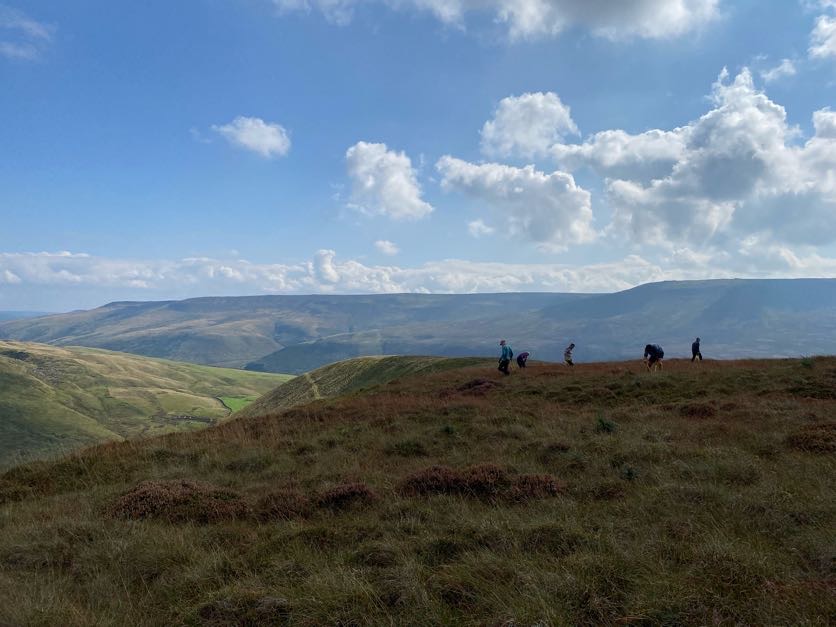It looks like there’s so much space. Just emptiness everywhere you look. Even the sky looks bigger up here. Is there anything here? Well yes, there is a bog. A type of bog called blanket bog. It doesn’t sound particularly exciting and perhaps at first glance it doesn’t look particularly exciting, apart from perhaps the stumpy Christmas trees that start to draw your eye.

But that’s why bogs need our help. The thing with a bog is that it makes you work for its affection. Get down low, perhaps on your knees, get yourself muddy and a little bit cold and there you’ll see it. The magical mosaic at your feet. Berries, sphagnum mosses, grasses. Greens, reds, oranges and purples. A rainbow but not of the sky.
But to see this magic isn’t easy, especially at the moment when so many bogs aren’t sparkling like they should. And so they are often overlooked, perhaps sometimes for something more obvious like trees. The trees up here, the misshapen, dwarfed and stumpy looking Christmas trees – the non-native and invasive Sitka spruce – are not suited to the waterlogged conditions that are a key characteristic of a healthy blanket bog. Yet, they are numerous. The seeds have been carried up on the wind from the plantations further down the hill and taken root on the exposed plateau of Bleaklow, in the Peak District.

In the uplands, mixed native woodland provides habitat for declining woodland birds including tree pipits, redstarts and pied flycatchers. These types of woodland are called clough woodlands and are areas of steep-sided woodland on the edge of open moorland. Important upland habitats in their own right, when they fringe blanket bogs, clough woodlands work in unison with the bogs to provide many benefits for people and the environment. The trees stabilise the slopes and provide a valuable home for wildlife.
The sparse Christmas-tree lookalikes, however, are an invasive species and both bog and tree are pitted against each other to compete for resources, to the detriment of both. Where a healthy blanket bog is waterlogged, tree roots take up and drain that water from the peat. Likewise, the trees are not suited to the waterlogged, acidic conditions and struggle against the elements into short, stunted trees. It is not a beneficial arrangement for either bog or tree.
A healthy moorland landscape comprises a mosaic of habitats which, together, provide a host of benefits to both nature and people. To reap the many benefits, from both blanket bogs and trees, means ensuring that both are playing their part; ‘the right tree in the right place’. A Sitka spruce, for instance, on a blanket bog is no good, likewise a bare clough is an environmental problem.
Moors for the Future Partnership is working to protect these moors and reverse hundreds of years of damage caused by human activity. This summer, a team of volunteers joined our staff to remove Sitka spruce from a National Trust-owned area of the Bleaklow plateau.
Over 5 days this summer, a team of 14 volunteers removed approximately 12,700 Sitka spruce seedlings from a huge 9.9 hectares. We can disclose that the sun was certainly not always shining, and we were privy to weather that perhaps only sphagnum moss can confess to enjoying!

This work was conducted as part of the MoorLIFE 2020 project, with the aim to control invasive species on Active Blanket Bog habitat. A huge thank you to our volunteers, a herculean effort that will have a lasting impact on the blanket bog habitat.
Fantastic work, thanks team 🙏 💪 🌲